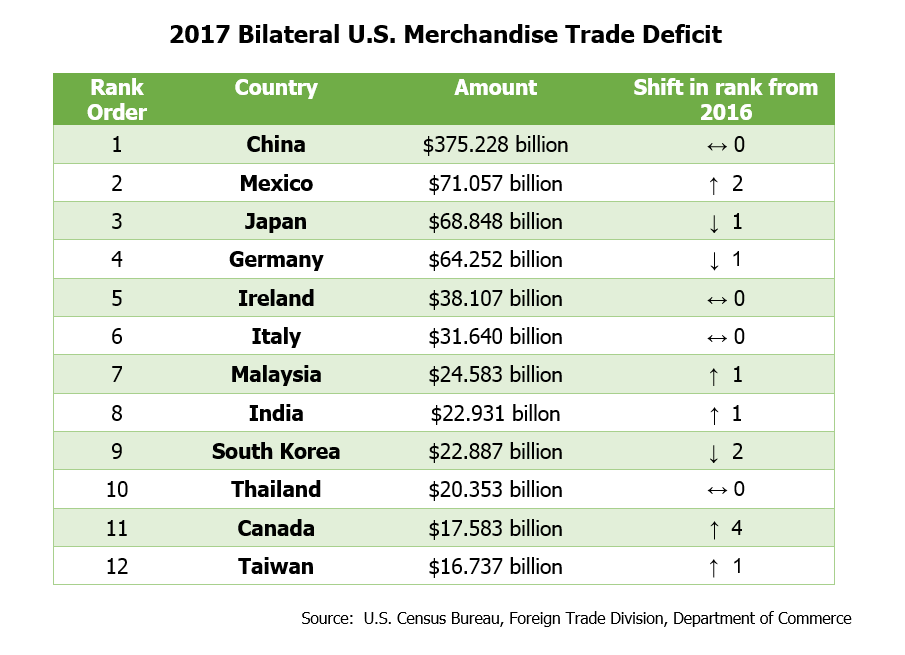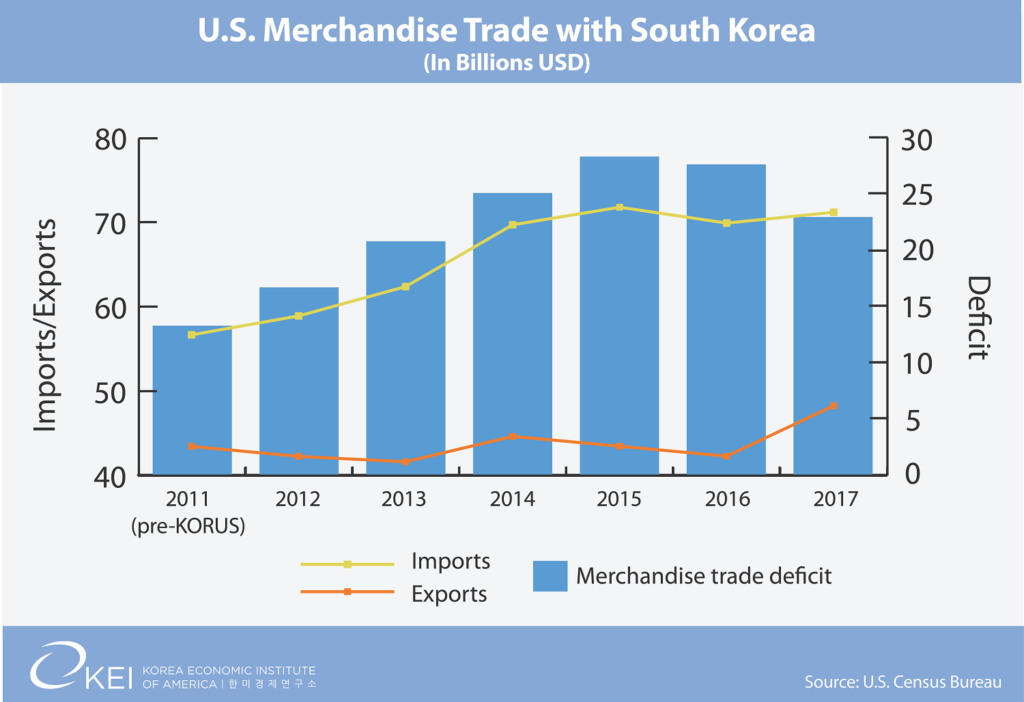The Peninsula
U.S. Hits New Record in Merchandise Exports to South Korea

By Phil Eskeland
Earlier this morning, the U.S. government revealed that the U.S. surpassed all previous records in exporting manufactured and agricultural goods to the Republic of Korea (ROK), reaching $48.3 billion for 2017. This trend started approximately 1 ½ years ago, but the previous year’s annualized trade data did not fully reveal this development because of the relatively low U.S. export levels during the first few months of 2016. As a result, some prematurely criticized the Korea-U.S. Free Trade Agreement (KORUS FTA) as the explanation for why fewer U.S. goods were being sold in Korea in 2016 because the analysis simply compared two sets of annualized data from 2011 and 2016 without digging a bit deeper behind the statistics. With only two exceptions, the U.S. exported at least $3.5 billion worth of products each month to Korea since May 2016, including seven separate months when U.S. exports exceeded $4 billion. In fact, U.S. merchandise exports to Korea in December 2017 tied a record level of $4.5 billion that was previously set last May. As a result, U.S. merchandise exports levels to Korea in 2017 grew over 11 percent from pre-KORUS FTA levels (2011).
These high U.S. export levels assisted in reducing the bilateral merchandise trade imbalance between the U.S. and South Korea by 19 percent from the previous record high in 2015. Thus, while the global U.S. merchandise trade deficit grew in 2017, the bilateral trend with respect to Korea went the opposite direction. Instead of rising in ranks as a country with a large merchandise trade deficit with the United States, Korea dropped two positions. Now, countries as diverse as Ireland, Italy, and India have a larger trade deficit in goods with the U.S. than South Korea.
This achievement is even more remarkable because the most recent set of data does not include trade in services information. The 4th Quarter trade in services statistics will be released by the Commerce Department on March 7th to reveal a complete picture of the U.S.-Korea trade relationship for 2017. However, if past is prologue, one can expect continued growth in both U.S. service exports to Korea and a continued bilateral trade surplus in services for the United States. U.S. service exports to Korea grew 26 percent between 2011 and 2016, producing a $10.1 billion surplus for the United States. Thus, the overall bilateral trade deficit in goods and services between the U.S. and South Korea may drop to as low as $10 or $12 billion.
Despite these significant accomplishments in record U.S. exports to Korea that has helped to lower the trade deficit, these trends may not hold up in the coming years ahead. While Korea has committed to purchasing more U.S. products valued at $57.5 billion during the next several years, this does not a guarantee that the bilateral trade deficit will continue on a downward trajectory. In addition, any modifications or amendments made to the KORUS FTA will also not guarantee a reduction in the bilateral trade deficit. As the independent and non-partisan Congressional Budget Office (CBO) noted years ago, “[t]he cause [of the U.S. trade deficit] lies not in international trade but in factors affecting international capital flows…[I]f one nevertheless wanted to reduce the deficit, trade policy would not be a good way to accomplish that goal… In general, the government policies that are most likely to have a large impact on the deficit are not trade policies but budget policy and any other policies that substantially influence saving and investment in the economy.”
Now that the President Donald Trump signed the Tax Cuts and Jobs Act into law, the U.S. Gross Domestic Product (GDP) could increase by about 0.7 percent, employment by 0.6 percent, and consumption by 0.7 percent. When the U.S. economy has improved in the past, this has resulted in increasing the trade deficit as well because Americans purchase more imports as more money flows through the economy. In addition, because South Korea’s economy is only approximately one-tenth of the size of America’s with 51 million people (the population of California, Oregon, and Washington in a geographic space slightly smaller than Pennsylvania), the ROK can only drive up domestic demand by a small fraction of what can be accomplished in the United States. Thus, the effect of Koreans buying more U.S. imports is far smaller than the purchasing power of 327 million Americans.
The trade deficit is often a misused and inappropriate metric to determine the overall benefit of an economic relationship with a specific country, particularly if the statistic omits services trade. One must have a full set of information, placed in context, in order to formulate an informed opinion regarding the value of free and open trade. Nonetheless, more U.S. exports to South Korea reflect the value of the KORUS FTA because it shows that the agreement has lowered trade barriers in many key sectors that have opened new export opportunities for American companies and workers.
Phil Eskeland is Executive Director for Operations and Policy at the Korea Economic Institute of America. The views expressed here are his own.
Photo from Saik Kim’s photostream on flickr Creative Commons.

